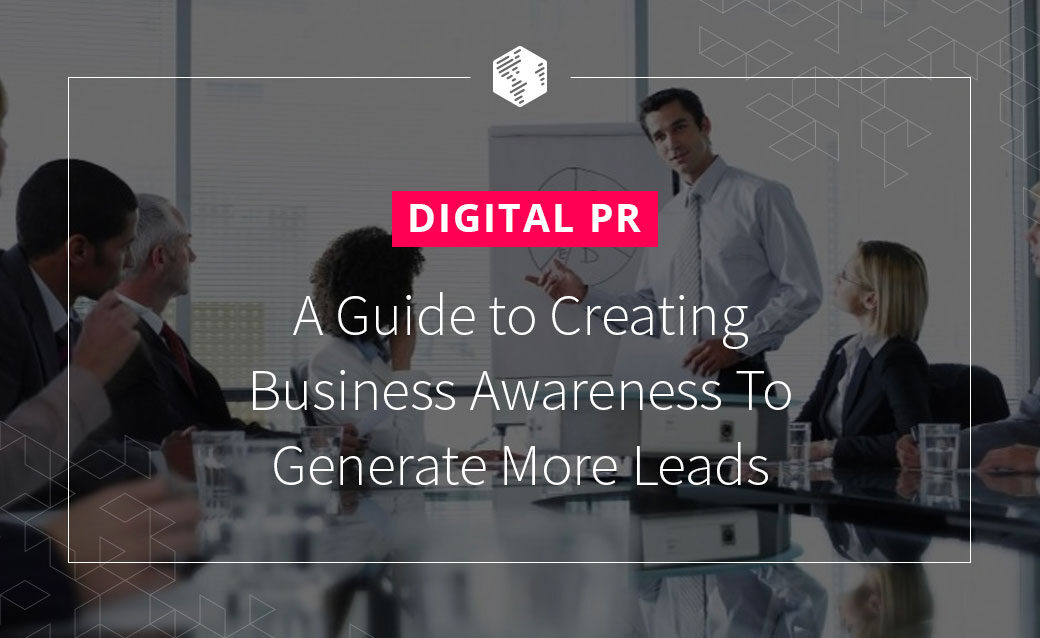Table Of Contents
Did you know that Digital PR is all about:
- Influencing
- Engaging, and
- Building relationships with your customers?
Yes, it is.
The engagement and relationships happen on the web, where you can find your ideal customers on social media networks, blogs, news sites, or while they’re searching for information on the search engine.
According to the State of B2B Procurement Study by Accenture, 94% of B2B buyers begin their journey online. But, how do these buyers know about your business or what it has to offer?
Remember that B2B buyers exhibit a unique behavior when they’re searching for information online. They don’t just find a product and decide to buy right away. On average, B2B buyers conduct 12 searches before engaging on a brand’s website.
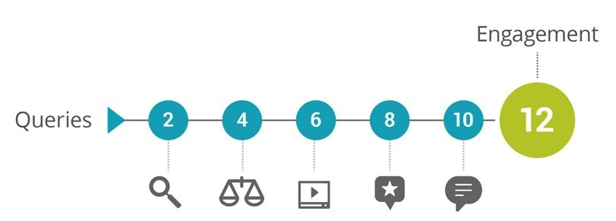
This is where digital PR comes in. It’s essential for your business if you want to generate leads, create business awareness, and establish brand credibility.
Without a digital PR strategy, your place in the buyer’s mind would be nonexistent because it creates unforgettable business awareness which results in lead generation.
The truth is that generating traction for your business can greatly improve your cash flow or sales cycle performance on the long run.
Furthermore, it can also multiply engagement with your customer — whether new or old.
It might interest you to know that in 2018, over 3.196 billion people were active on various social media sites.
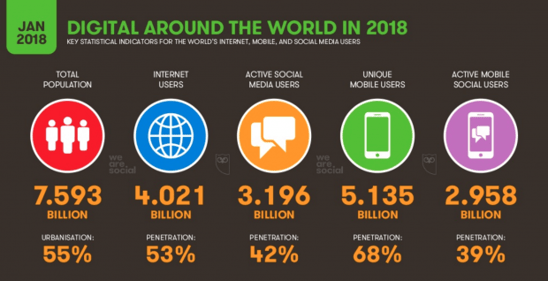
As you increase recognition and awareness for your brand, you’ll acquire a powerful base of loyal customers who believe in your products and services as the best in the industry.
Business awareness affects numerous aspects of a client’s journey; however, its end-goal is to generate more leads, which, in turn, translates into sales. However, if you want to record increased sales you first have to start with leads.
Hence, lead generation must be at the forefront of any digital PR campaign which seeks to create brand awareness.
Let’s face it; the online marketplace is choked full with various businesses all competing to ensure that their brands are the most recognizable among buyers.
If you don’t have the right digital PR strategy and know the most effective steps to take in your PR campaign, your company will miss out on massive revenue opportunities.
Now, put everything on hold and let’s work through these vital tips for creating business awareness that results in profitable lead generation.
Before we get on to the strategies and tactics to make your digital PR a successful one, let’s understand what it is in the first place.
What is Digital PR?

Basically, digital PR (public relations) is the formal practice of creating awareness to influence, engage, and build relationships with ideal customers across a myriad of digital platforms such as social media, blogs, and online advertising networks, in order to ignite and shape the customer’s perception of your business.
The Public Relations Society of America (PRSA) defines Public Relations as “the strategic communication that builds mutually beneficial relationships between organizations and their public’s.”
This contemporary method of PR allows you to reach your target audience by showcasing your business or products on websites where they’re active on, social media platforms they love, and featuring your brand on various podcasts they listen too.
It also can get your business 5-Star customer reviews on sites like Amazon and Google.
A recent survey by Instagram showed that 200 million users visit a business profile page every day. With proper digital PR done on social media sites, your business can have access to many potential customers.
What’s the Impact of Digital PR?
The end goal of digital PR is its positive impact on your website’s visibility online. This could be a higher ranking in Google and more social shares (likes, comments, views, retweets, repins, etc).
What’s more? For local a business, a carefully crafted digital PR strategy should be aimed at ensuring that the business gets featured in numerous online publications in that locality.
These can be local blogs whose authors live in your area, local news websites, and reviews from local customers who have purchased from you.
Basically, digital PR is an enhanced form of PR. Rather than just targeting print publications; it focuses on brand awareness and online publications.
These online publications Include; online press releases, articles, working with influencers and bloggers on service or product reviews and features, affiliate marketing, securing press hits through content marketing, getting featured on a Podcast, etc.
It also utilizes social media to achieve exposure and creates brand credibility with online reviews.
A great example of the impact digital PR can have on a business in terms of awareness is the #TFWGucci campaign.
Gucci decided to reach out to young people who normally couldn’t afford their products with a campaign on Instagram and this amassed a total of 200 Million likes and over 21,000 comments.

By imitating memes, Gucci tapped into a powerful internet trend that resonated with its target audience. The memes amassed almost 2 million likes and over 21,000 comments on Instagram.
Each post accumulated an average of 67,000 likes and 768 comments creating a buzz around the brand. That’s the power of digital PR.
All these digital PR methods have a strong impact on your website’s search engine optimization (SEO) — if done properly.
To do them properly, you need to understand Google’s ranking signals and guidelines. That’s a step towards improving your visibility in the search engine results pages (SERPs).
This is why a lot of digital PR campaigns are anchored by content marketers and SEO experts who have been in the trenches for years and can interpret Google’s algorithmic approaches.
Without proper digital PR, all SEO campaigns you’ve been investing in won’t get you to the first page on Google.
Whenever you hear online marketing experts or digital PR agencies refer to “offsite SEO” it is inclusive of digital PR.
How Do You Build Public Relations?
Now we know what digital PR is and its impacts on your business or brand. Let’s see how to create public relations, where do you start from and what should you consider?
Here are the steps needed to build strong public relations:
1. Identify your Online PR Strategy
The first thing you must do when seeking to launch your PR efforts is to outline your PR strategies.
Since you want to ‘eventually’ rank your web pages high in Google, in order to generate leads and customers, you also want to steer towards a PR-based SEO and understand how the process works.
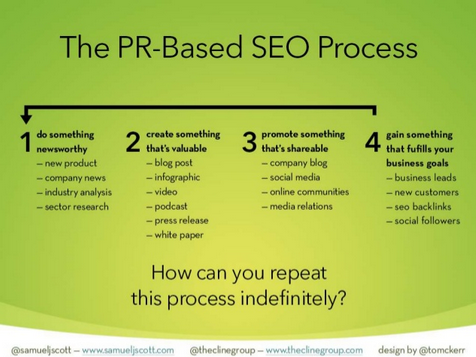
This relates to creating a point by point outline and identifying the aim of the campaign, tiers of the press, key media targets, and your target audience as well as the outreach tactics you intend to use.
This is such an important step to the success of your PR campaign.
2. Evaluate the Media You’ve Chosen
After you’ve decided on what press tier you want to use and identified your target audience and your key media target, the next thing to do is evaluate the authority, credibility, and reach of the media outlet you’ve chosen.
Questions you should ask yourself is how wide is their reach? And what is the public view of this media outlet?
You wouldn’t want a blog or online publication readers do not see as credible featuring you as that would spell disaster for your brand’s trust.
Furthermore, if you are seeking for domain authority as the goal of your public relations, it wouldn’t make sense to have backlinks on a site with low domain authority.
Also, if you need business awareness, getting featured on a blog with low traffic would be a wasted effort.
So you need to evaluate the media you’ve chosen properly to ensure it fits your goals.
3. Outreach
Now that your media lists have been evaluated and solidified, you can begin to build a pitch to the various media outlets you choose. This is a very delicate process because first impressions matter.
For example, trying to reach out to first-tier press websites through a phone call might not work out well.
Always start with an email and ask for permission to call in order to iron out the logistics of your feature if needed.
It’s best practice to give a positive comment on a particular article and then mention how your business or brand relates to what the blog, website or online publication is all about.
The power of outreach is in consumers wanting to hear the benefits of your service or product from a third-party and not just from you.
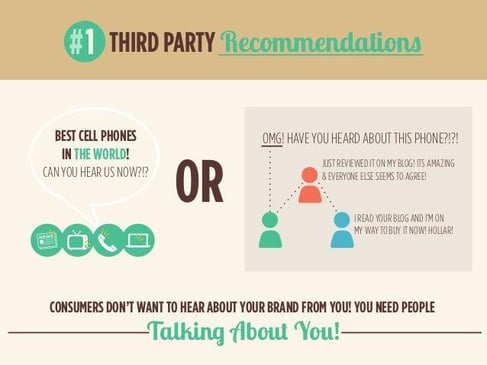
What’s the Aim of a Public Relations Campaign?
Before implementing PR as a part of your marketing strategy or as a separate service, you must first understand the purpose of PR.
There are some key purposes of a digital PR campaign. One of the major aims of a PR campaign in both the digital and traditional sense is to create brand awareness.
1. Brand Awareness
Brands awareness is generally what comes to the thought of people when they hear public relations, and they’re right!
Why?
Because it has always been a tactic to use the media to reach your target audience and introduce your business to people who would otherwise not be aware of it.
Creating business awareness by getting press placements drives web visitors (i.e., prospects) to your site with the end goal or aim of capturing them as leads.
Does Your Business Require a Digital PR Plan?
Your business is ideal for PR if it’s a new one that a lot of people aren’t aware exists or even know what it offers.
Digital PR is also the perfect fit for your business if you offer something unique that you know would make you stand out from others in your industry.
For instance, it could be a unique perspective or offering, great company culture, or a social impact. Whatever it is, it’s something that you can pitch, and it would resonate with readers and the press.
2. SEO Goals
Another aim of digital PR which has been more recently implemented is utilizing PR to achieve SEO rankings. Yes, you can make Digital PR and SEO work together and the results will be obvious within 3 to 6 months.

One of the best ways to increase rankings for your business’ website on Google is to get quality links on authoritative sites, which is known as backlinks.
Think of the link as a vote of credibility that your website is getting from an authoritative domain in your niche. Google rewards sites whose content are linked to by giving them a higher ranking in the organic results.
The question you may ask is why would I want to rank high on Google? Well, it’s simple:
The higher your website ranks, the more plausible is it for someone to visit your page and convert to a lead.
Since the goal of digital PR is securing online placements, there is a massive linking opportunity for quality backlinks.
Is Your Business Fit for SEO?
Any business that has a website should pay serious attention to SEO, which is primarily driven by digital PR practices.
A website has no meaningful online presence without a showing up high in the search engine results or generating organic traffic.
Furthermore, if your business is completely new to the digital world and has a low domain authority, your brand can benefit immensely from links placed on highly authoritative and relevant third-party sites.
Objectives of Digital PR
The objectives of digital PR are as follows:
1). Promoting Goodwill
One of the major objectives of digital PR is to improve the goodwill of your brand among your target audience.
Having a good digital PR will give your brand a good image and will endear your target audience to your product.
A good digital PR will also increase the awareness of your brand to the online community. Once your brand appeals to people, they will most likely refer other interested people to it.
2). Drive Awareness
You can create massive awareness for your brand. Although a PR is similar to an advert — it isn’t entirely the same.
Raising awareness is not only for upcoming or new businesses, but it’s also meant for companies that have been in existence for a long while. The moment you decide to ignore getting people aware of your brand, your brand will begin to collapse.
No matter how new or how old your brand is, there is a need for increased awareness of your audience so that your brand doesn’t lose its relevance.
A good way to ensure that your audience is constantly aware of your product or brand is to make digital PR moves; this will help to boost your brand recognition among your target audience.
3). Steer People’s Attitude
A good digital PR can also be used to improve and reshape the perception and people’s attitudes towards your brand.
If you are not satisfied with the attitude of your customers towards your brand then you should get a digital PR done.
The main objective of any good PR is to make sure that the brand is perceived in a good way by the target audience. Once the target audience thinks highly of the brand, they will automatically prefer to choose your brand over others.
3). Inform and Educate
It’ll be hard for the objectives of a digital PR to be achieved if it doesn’t inform and educate the target audience about the brand.

By informing people about the brand and making them know all the positive things about your brand, you will generate a positive sentiment about your brand and product which will help your brand stay on the customer’s mind — and this will automatically translate into leads and conversions.
Developing a Digital PR Strategy
It may seem and look effortless but developing the perfect digital PR strategy isn’t an easy task. The regular elements of a traditional PR campaign (research, planning, and execution) should all be merged in online PR qualities.
It’s a tricky thing to do but if done the right way, it would be immensely effective.
Below are the strategies you would need to develop a positive digital PR campaign:
1. Research and Analysis
Research and analysis are the basic requirements in developing a strategy. You need to conduct an in-depth analysis of the PR campaigns of other businesses in your niche.
This will reveal to you how they promoted their brand and how to either replicate their tactics or avoid them altogether. This, however, doesn’t mean you should copy the ideas of your competitors and use it in your own campaign.
Rather, you should look for what is missing from their branding and take advantage of the opportunities it presents for your business. This will enable you to be one step ahead of your competitor.
2. Create Relationships with Bloggers and Content writers
Just as the name goes, the integral aspect of public relations is to create and maintain relationships with marketing influencers, bloggers, and content writers. Why?
Because these influencers and bloggers would quite often promote your business or service due to the positive relationship they share with you or your PR officer.
Given that every B2B or B2C company is aiming for that ‘sweet spot’ to maximize their reach between paid, owned, shared, and earned media, you need influencers in and outside your industry to support you, in terms of amplifying your content to reach more prospects and customers across the web.
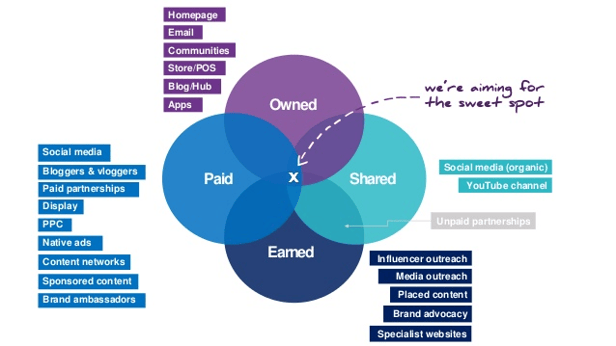
3. Get Insights From Your Google Analytics
Go through your Google Analytics regularly to see how many people have engaged with the posts you have published and shared online.
This will help you to know when there’s something wrong in the content you delivered and also gives you an opportunity to engage your customers based on their content preferences.
4. Share Quality Content
Yes, it’s great to build the best relationships or even have amazing services or products. However, if you’re unable to provide great content, then it’s all for naught.
You need to offer captivating content in order to spike the interest of your target audience.
Think beyond the norm, create and innovate helpful and interesting content to get users’ attention online. Strike a balance between content quality and content quantity.
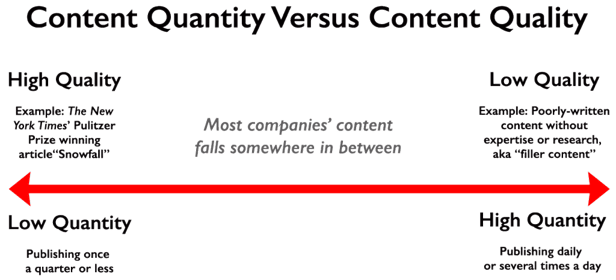
In the digital world, valuable content is what matters — it’s the reason why people use search engines, social media, and news sites.
Digital PR Ideas and Tactics
One beautiful thing about digital PR is that day in day out; new tactics are being developed to enable you to get the best out of your marketing campaigns.
Let’s examine some of these tips and tactics to get you started right away:
1. Branding
Branding distinguishes you from your competitors and also gives you the power over what the media and consumers say or think about your brand.
Branding is a very efficient way of improving the view of the public concerning your brand. With it, you can showcase your amazing executive team as well as how current and up-to-date your brand is with technological advancement.
Visa, one of the most used credit cards in the world nailed their branding campaign. The team identified an emotional distance that exists between its brand and the customers.
According to industry research, brands capture people’s attention for just 6.5 seconds, so Visa leveraged that opportunity to create the GoInSix campaign.
This enabled the brand to get interactive content designed to excite and motivate people to dine, shop, and travel — by either using six-second videos, six-image vignettes, or six words.

This campaign was rolled out across several social media channels and Visa encouraged industry influencers to upload their own GoInSix stories.
As a result, Visa’s Facebook engagement score ranking grew from seventh to first in ‘finance’ category and climbed to second in all lifestyle brands.
The campaign generated 284 million earned impressions, five times more than Visa’s previous campaign, which had 18X more media spend.
The truth be told, everything from the company’s logo to color to products to culture, and so on, are important aspects of branding. Storytelling and tone are equally essential to branding — because they give credibility and personality to brands — both big and small.
Branding has a lot of effect on people’s opinions about your business. With 54% of people in a recent survey by eConsultancy stating that the colors you use alone are capable of imprinting your brand in their minds.
For Instance, the online bank Simple, carved a niche out for itself by simply focusing on mobile banking at a time when the traditional banks were slow to do so.
This associated the brand with the term “The 21st-century bank” and made it unique.

2. Contributor Marketing
Contributors are occasionally called to share insights about different brands in the industry and they add a lot of color to the voice of brand media.
Consumers trust contributors and value their reviews about a brand especially when the contributor is not a journalist. Making use of contributor marketing is a digital PR strategy that will enable your brand to gain media attention.
With over 82% of consumers in a survey stating they would follow the suggestions of another person other than the brand, contributor marketing is simply amazing.
For instance, Banana Republic got @Maryorton, who is a fashionable Instagram personality and a contributor in the fashion industry to wear their product and talk about it.

3. Executive Thought Leadership
A digital PR trick that most people don’t take advantage of is looking for ways of making industry leaders a part of the conversation.
A lot of people are on the lookout for what leaders in the industry, as well as your executive team, has to say about your brand and harnessing their intelligence to the benefit of your brand will improve the image of your brand.
4. Influencer Marketing
Over the years, influencer marketing has proven to be a good digital PR strategy and a lot of brands capitalize on influencers to market their products.
The fact that social media consumers can interact with the Influencers and get to know their thoughts and ideas concerning the brand, makes it a very easy strategy of getting your target audience to access your brand.
Influencer marketing has proven to be a powerful form of digital PR.
About 70% of YouTube subscribers in a recent survey stated that they relate more to their YouTube subscriber than the traditional celeb. What’s more? 4 in 10 millennial say their favorite YouTube creator understands them better.
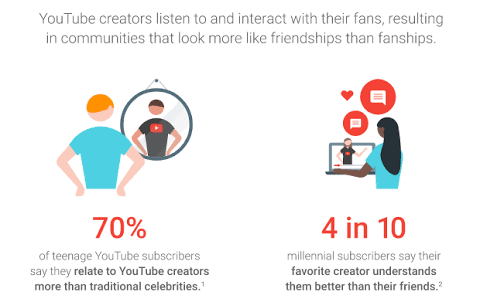
Take for instance the Sony’s Xperia Z5 Influencer marketing campaign on Instagram, it involved more than 30 Instagram influencers who took part in a challenge to zoom 5 times into a photo and share their results. It yielded in over 17 million leads for Sony.
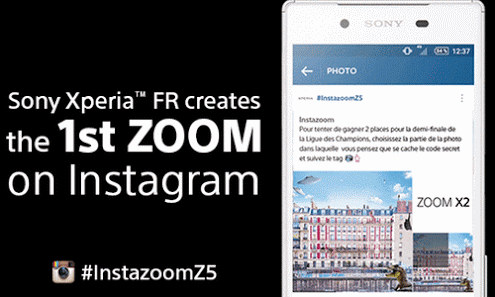
Consumers trust brand influencers’ reviews and opinions and getting an influencer to talk about your brand will definitely do your brand a lot of good.
5. Journalistic Integrity
This may not appear like a strategy but it’s definitely a trick that will give your brand an edge in the crowded industry.
The influence of journalists and the media on the integrity and image of persons, organizations, and brands can’t be overemphasized.
A brand can be skyrocketed into fame and dominance in the industry by a good journalistic report, but bad news about a brand can also ruin the good image it has struggled to build for years.
That is why you must do everything within your control to ensure that your branded content is verifiably accurate so that journalists won’t have any reason to give your brand bad publicity.
6. Live Video
This is another proven digital PR tactic that’s very effective. You can experiment by having a live Snapchat, Facebook, or YouTube video and you will be shocked by how much it’d resonate with your target audience.
According to Instagram, there’s been an 80% rise in time users spend watching videos, which shows the power of videos on the Web.
In another survey, 79% of marketers see YouTube as the best video marketing channel, with the same percentage stating it delivers positive results for their businesses.
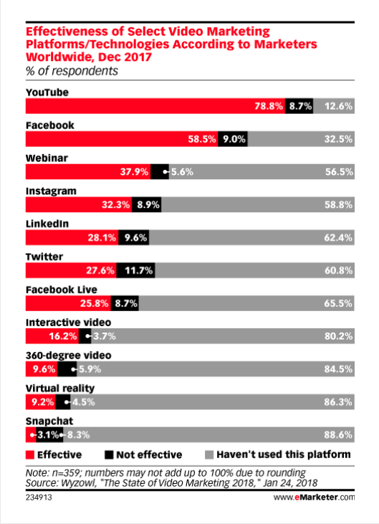
Based on these numbers, it shows why video marketing is important — since it drives website traffic, quality leads, sales, and brand awareness.
Bloomberg, for example, has live video sessions on Facebook, with the aim of showing its followers charts and graphs in 15 minutes so they can carry on with their day.
What’s more? It even offers a question and answers session, so they can be sure followers understand everything shown to them.

Consumers love to be able to pop in on a brand at any time and live videos seem to be the best way to do that.
Not only is it a pleasant surprise to your audience, it’ll also grasp the consumer’s attention and get them more engaged in your brand.
7. Social Media
Social Media is now so popular that a huge percentage of the world’s population has one social media account or the other.
A CMO survey as of 2017, stated that social media spending was budgeted to rise by 32% and double by 2023. How amazing is that?
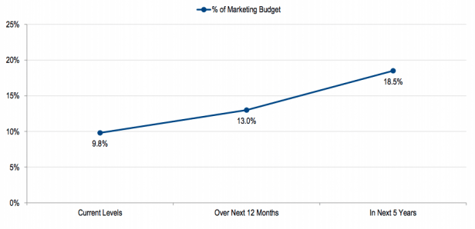
The good news is that you can make use of social media to improve your brand.
Identify the social media channels where your target audience is actively participating and create a social media presence there.
A great example of the effect of social media on your digital PR strategy is IPSY. IPSY is a brand that offers glam bags but has an interesting approach to social media marketing.
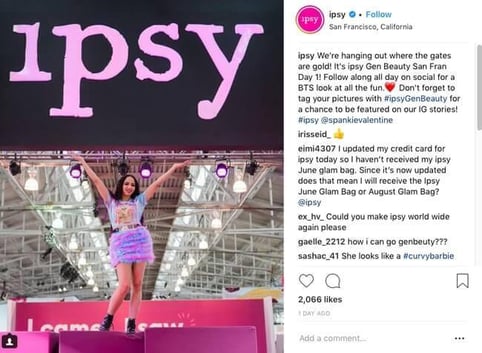
They don’t just upload photos of their bags, they sometimes put up memes with inspirational quotes.

This approach has garnered the eCommerce brand over 2 million followers on Instagram. That’s impressive if you ask me!
Be always there for your customers and reply to their questions and comments and also share valuable content.
In addition, ensure you include your social media page in every single marketing campaign you choose to embark on.
8. Your Web Address
The importance of your address to your digital PR cannot be overemphasized and it’s important that you make it easy for your target audience to find you on the web.
A strong URL (i.e., your site address. E.g., cnn.com) will make you easily visible to your consumers and will make them bypass all other search engine suggestions and come straight to your site.
There are a lot of website extensions aside from the popular .com, .net, and .org. If you want to remain memorable online, stick to these popular extensions (preferably, .com)
Digital PR and Traditional PR
Digital PR and Traditional PR are both used to provide a strong strategy that makes the brand reach a wide range of audience and also improves the brand’s awareness and engagement.
Despite these similarities, there are still differences that exist between Digital PR and Traditional PR and they are as follows:
1. Media Outlets: Traditional PR focuses on traditional media outlets like radio, newspapers, and televisions to make press outreaches, while digital PR makes use of online platforms to create awareness.
Digital PR takes advantage of SEO and link building on the web to reach the target audience.
2. Measurement: Traditional PR can’t exactly measure the number of people that they reach out to; all that can be done is to make an estimate by tracking the circulation and reach of the audience.
Digital PR, on the other hand, makes use of measurement tools like Google Analytics and Moz’s Open Site Explorer to measure the number of users that interact and engage with the brand’s website.
3. Content Usage: Digital PR content is usually used up within twenty-four hours but Traditional PR takes more time and requires patience.
This is because print publications and broadcasts require a longer lead time except it is extremely newsworthy.
4. Offline Visibility: Traditional PR focuses on offline visibility and can sometimes require events and press conferences.
And even though the information is disseminated to a large number of people, there is very little feedback from the audience beside it is not dialogue driven and this makes it a one-sided communication.
On the other hand, Digital PR focuses on online visibility; contents are placed on different search engines and efforts are made for the content to rank high in online searches.
It also entails receiving social media feeds from the audience brings about more engagement with the brand and enables the brand to receive feedback from the customers.
5. Means of Distribution: Digital PR makes use of social media platforms, blogs and websites as the main means of distributing information to connect with the audience and increase engagement opportunities while Traditional PR makes use of the mass media outlets like broadcast and print.
Digital PR SEO
In today’s digital marketing world, the line separating PR and search engine optimization is fading away fast, to form an evolved hybrid circuit.
This is happening as a result of Google’s standard on what quality content entails.
The adjustment was initiated by the Penguin update and the new algorithm for deciding quality content.
These changes shook the SEO world and it becomes clear that PR professionals were perfect for this change.
All of a sudden, random link building was no longer relevant and quality content became the foundation of what Google truly cares about.
What matters now is rich and valuable content so good that authority sites now feel compelled and excited to link to it as reference voluntarily.
When that begins to happen, Google will get signals that your content page is worth ranking at the top of their organic listings.
It shows that your content page is credible and people are interested in what you delivered and since the main objective of Google is to satisfy customers queries, it rewards you for this.
Simply put, without digital PR, your SEO efforts will be a waste of time and resources.
Digital PR Examples
1. The ALS Ice Bucket Challenge
This is probably one of the most popular digital PR campaigns of all time. It’s an excellent example of an out-of-the-box, unique, digital public relations.

It isn’t the run of the mill PR campaign. The whole purpose of the campaign was to create awareness of ALS disease and raise donations. However, a huge challenge faced by nonprofits is getting the attention of the younger generation.
This is why the not-for-profit team decided to engage social media in their public relations which ended up being the biggest contributor to its success.
The campaign showed a fun way to create awareness of a serious disease. It basically involved nominating 3 friends and when one underwent the challenge, they nominated 3 others and it spread like wildfire.
And guess what? The campaign received its initial boost with celebrities like George Bush, Taylor Swift, and Oprah Winfrey being the first to partake in the challenge.
This campaign led to $70 million dollars in donation for the cause and it was all user-generated due to its user engaging nature.
2. Always – LikeAGirl

Another great example of digital PR is the ‘always campaign’ tagged #LikeAGirl.
It involved a series of videos, social media campaigns, captivating landing pages and partnering with UNESCO, Girls Scouts of America, Lean in and much more.
The PR campaign focused on empowering women going through puberty and how the phrase #LikeAGirl had an impact on their confidence. It resonated deeply with the female demographic which resulted in the tweet trend #LikeAGirl.
Digital PR Tools
PR professionals have a lot to do and they need all the help they can get. That’s why digital PR tools are needed.
These tools not only make the work for PR professionals easy but they also help to conserve time and enable the professional to have a positive outcome.
Below are some categories of digital PR tools that you can use to improve your digital PR skills.
1. Time and Project Management Tools
Time is of the essence in creating a digital PR and it’s therefore important to have a tool or tools that will help you maximize time.
With the tools in this category, you and your team can effectively manage your workload and you will also be able to prioritize and manage different projects at the same time.
Here are some time and project management tools:
i). Trello
This tool will help you to organize your project. On Trello you can create boards in which you can create cards for different projects and assign teammates and any other vital information that needs to be added.
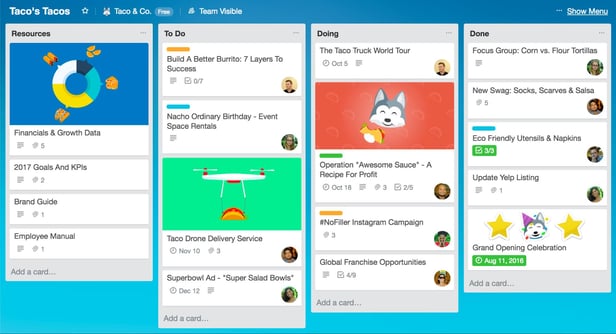
ii). Wrike
Wrike is designed for large projects that will run for a long time. It has some nice management features like Gantt charts and it also has an analytics tab which you can use to monitor your team’s efficiency.
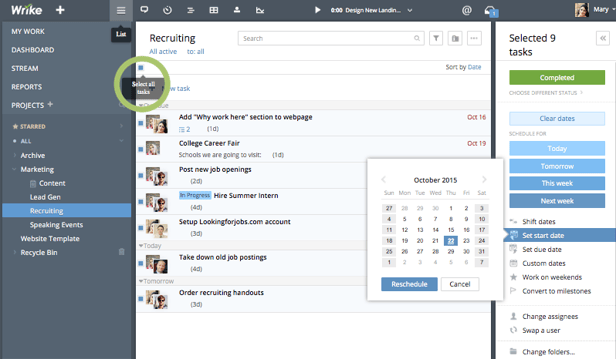
2. Website Analysis and SEO Tools
A good PR content is useless if it’s not SEO-optimized. There’s an existing tool that will help to boost your SEO ranking. My favorite is SEMrush.
i). SEMRush
This tool is quite easy to use. It’s an online visibility management platform. It will help you to generate and understand your data and how to make better use of them.
You can get data on the keywords you should focus on in the future, how your competitors are doing and who is sending you Backlinks.
Basically, SEMrush will enable you to set a direction for future communications and search engine strategy.
3. Monitoring and Content Curation Tools
These tools will help you to get information and monitor your potential business partner, journalists, bloggers, etc. You’re able to get the necessary information about them for creating better content.
i). Mention
Mention is used by more than half a million PR professionals on a daily basis.
It can help you to track your brand and your competitors as well as generate reports to enable you to understand your work better, defuse potentiometer PR crisis and also share your results with stakeholders.
ii). Buzzsumo
Buzzsumo will help you to know the most shared content on social media that is related to a particular topic. As well as set an alert based on a particular keyword brand, domain, and author and even track your competitors.
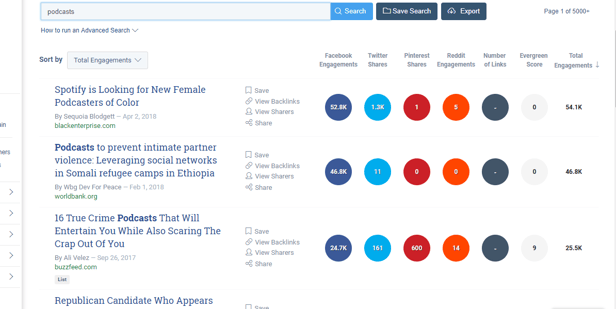
4. Content Creation Tools
In order to keep your audience engaged, you must create very good content. There are tools that will help you create outstanding content.
i). CoSchedule – Headline analyzer
In just a few seconds, this tool will analyze your title suggestion and will provide tips on how to improve it to make it more useful, catchy, and relevant to your target audience.
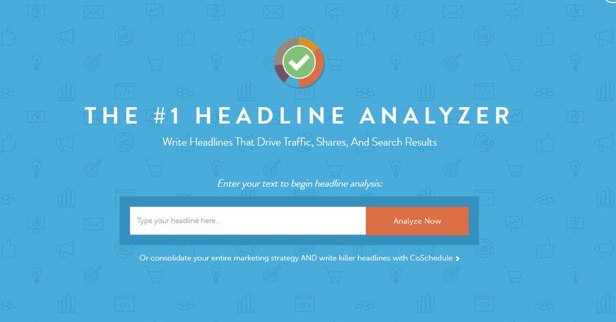
ii). Hemingway
This tool will help you to keep your press release short, simple and straight to the point. It will identify sentences that aren’t necessary and you’ll be able to get them out.
It’s great for non-native English speakers.
5. Design Tools
You can get your Photoshop and illustrations done by yourself with the following tools.
i). Canva
Canva is an online design tool that will help you make beautiful designs without being a professional designer. Canva has 65,000 design templates that you can choose from.
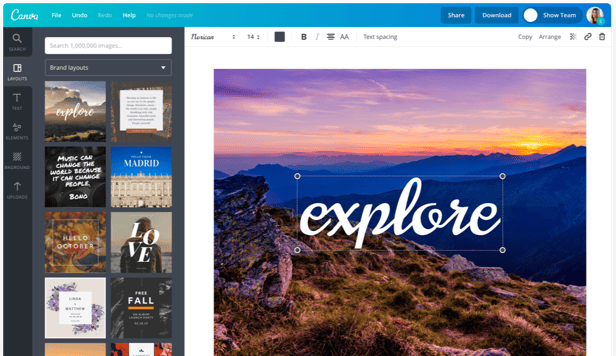
ii). Unsplash and Pexels
These tools are stock photo banks on the Internet where you can find the works of talented photographers that you can use.
This will save you a lot of time and energy. But ensure that you give photo credit to the photographer whose work you choose to use.
Conclusion
There you have it. The rich guide to creating business awareness and generating leads online. If you truly want to give your business a strong online presence, then you need to incorporate digital PR in your marketing campaigns.
It’s a non-negotiable asset to your brand’s success on the web, irrespective of your business model, product, or industry.
Of course, you can follow the steps, strategies, and tips in this guide to develop a winning digital PR campaign for your business.
However, if you don’t want to mess around with the complex tasks associated with Digital PR, OneIMS is here to support and help you. Request a free strategy session today.

